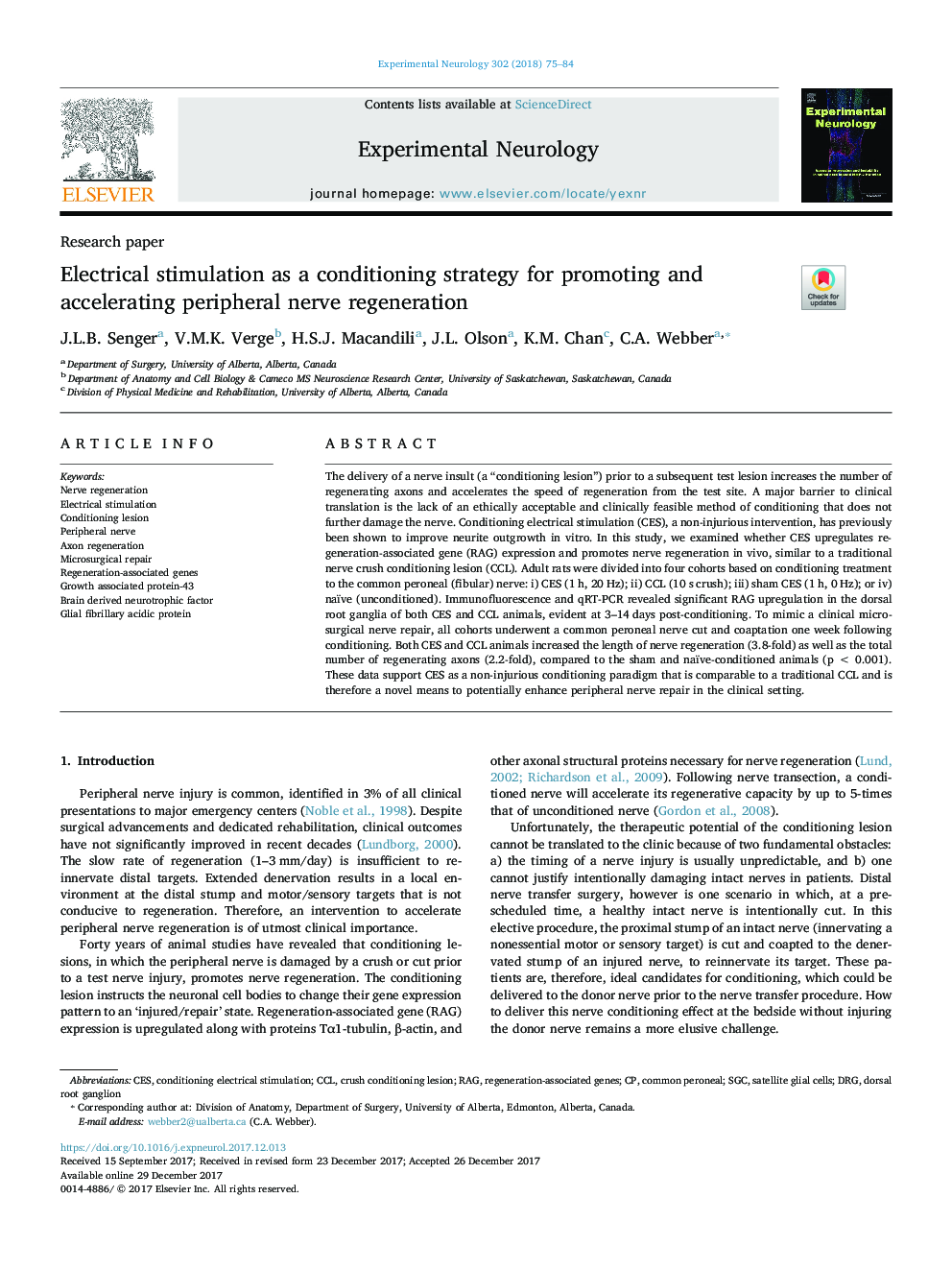| Article ID | Journal | Published Year | Pages | File Type |
|---|---|---|---|---|
| 8684679 | Experimental Neurology | 2018 | 10 Pages |
Abstract
The delivery of a nerve insult (a “conditioning lesion”) prior to a subsequent test lesion increases the number of regenerating axons and accelerates the speed of regeneration from the test site. A major barrier to clinical translation is the lack of an ethically acceptable and clinically feasible method of conditioning that does not further damage the nerve. Conditioning electrical stimulation (CES), a non-injurious intervention, has previously been shown to improve neurite outgrowth in vitro. In this study, we examined whether CES upregulates regeneration-associated gene (RAG) expression and promotes nerve regeneration in vivo, similar to a traditional nerve crush conditioning lesion (CCL). Adult rats were divided into four cohorts based on conditioning treatment to the common peroneal (fibular) nerve: i) CES (1 h, 20 Hz); ii) CCL (10 s crush); iii) sham CES (1 h, 0 Hz); or iv) naïve (unconditioned). Immunofluorescence and qRT-PCR revealed significant RAG upregulation in the dorsal root ganglia of both CES and CCL animals, evident at 3-14 days post-conditioning. To mimic a clinical microsurgical nerve repair, all cohorts underwent a common peroneal nerve cut and coaptation one week following conditioning. Both CES and CCL animals increased the length of nerve regeneration (3.8-fold) as well as the total number of regenerating axons (2.2-fold), compared to the sham and naïve-conditioned animals (p < 0.001). These data support CES as a non-injurious conditioning paradigm that is comparable to a traditional CCL and is therefore a novel means to potentially enhance peripheral nerve repair in the clinical setting.
Related Topics
Life Sciences
Neuroscience
Neurology
Authors
J.L.B. Senger, V.M.K. Verge, H.S.J. Macandili, J.L. Olson, K.M. Chan, C.A. Webber,
